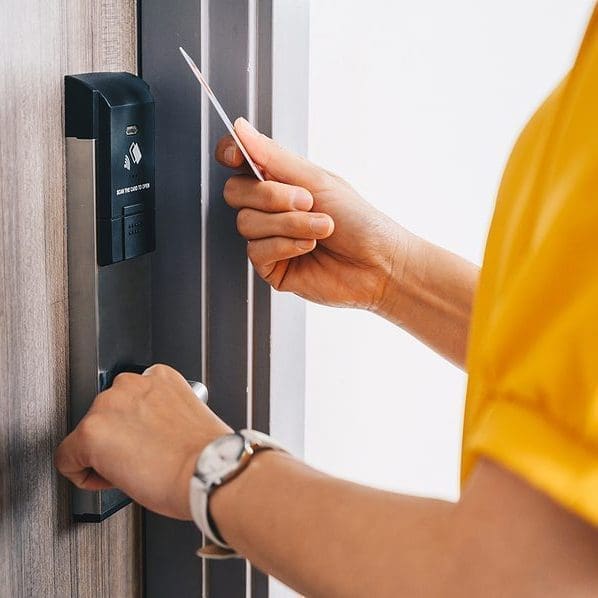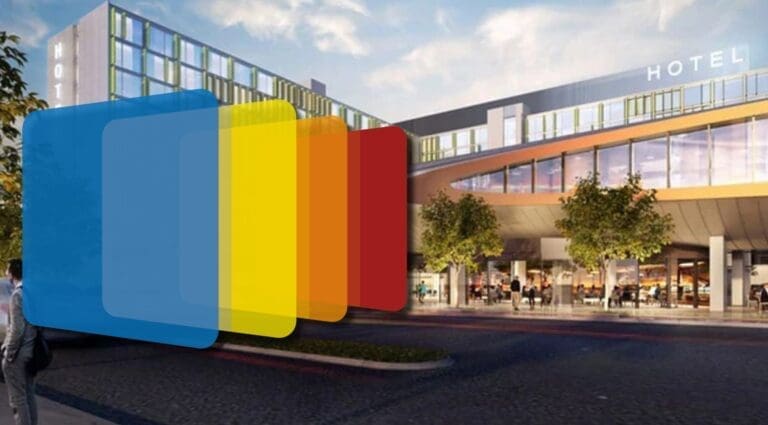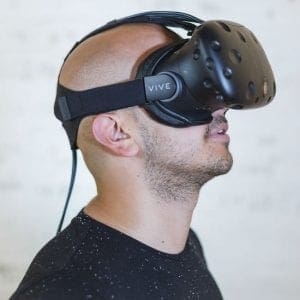 Usually, when I welcome hospitality management students to my classroom for the first time, their motivation is not really at its maximum. With a title like my course – Hospitality Security Management – can I really blame them? Between dynamic marketing classes, creativity spaces where they can think about the service of the future and the mysterious world of mergers and acquisitions, discussing security and loss prevention is for them more like a synonym of health and safety in the kitchen (the classic cross contamination) than a really strategical aspect of the hospitality world that is now one of the top priorities of our industry, day in and day out.
Usually, when I welcome hospitality management students to my classroom for the first time, their motivation is not really at its maximum. With a title like my course – Hospitality Security Management – can I really blame them? Between dynamic marketing classes, creativity spaces where they can think about the service of the future and the mysterious world of mergers and acquisitions, discussing security and loss prevention is for them more like a synonym of health and safety in the kitchen (the classic cross contamination) than a really strategical aspect of the hospitality world that is now one of the top priorities of our industry, day in and day out.
The fun – if I may call it that – starts when they acknowledge that it’s better to see reality as it is, with no boundaries, no taboos, and no blinders. Yes, as you all know, managing a hotel is filled with beautiful surprises, daily happiness and sparkles in the eyes.
But now, taking the role of a responsible leader also comes with the obligation of being aware of all the possible ‘what ifs?’ that can occur in your establishment. Unfortunately, hotels are soft targets that can be the scene of terrorism, cyber crime, human trafficking, drug dealing, hold-ups, prostitution and violence of all forms – and that’s without even talking about natural disasters, blackouts, viral diseases and technical breaches that can really change the day plan of any MOD, even if they are prepared and well trained.
As security is now marketable (Montreal positions itself as the ‘Switzerland of America’ for the corporate and event markets), let’s go beyond the usual health and safety rules and talk about situations that happen for real. Let’s actively create simulations and be proactive so we can collectively try to be better at what we do best: welcoming guests from all over the world to safe, comfortable and peaceful environments.
Once students have mastered the premises of hotel security awareness – from Stefan Vito Hiller’s Shield and lamination principles, crime iceberg theory, and social engineering to Jean-David Darsa’s risk pyramid that regroups all the varieties of risk in 13 categories and the emergencies basicsÊÐ the next important concept that I want them to think about applying to real situations is Crime Prevention Through Environmental Design (CPTED, pronounced ‘sep-ted’).
U.S. criminologist Ray Jeffery popularized these guidelines in his book – named after the concept – published in the early 1970s. Rick Draper and Emma Cadrow of the International Security Management and Crime Prevention Institute, wrote that “Jeffery’s work suggests that the physical and social environment can provide opportunities for crime to occur, and it follows that opportunities for crime can be reduced by varying environmental factors. Jeffery’s CPTED concept was a turning point in the evolution of the ‘art’ of crime prevention.” Therefore, applying CPTED strategies to hotels (it was first developed for schools) can significantly contribute to a safer environment by influencing the behaviour of employees, guests and visitors.
As you can observe on the image below, CPTED rests on four axes that are different but complementary: natural surveillance, territorial reinforcement, access control and maintenance.
Natural surveillance
The best way to explain natural surveillance is with the example of elevators in shopping malls. In the 80s and 90s, elevators were located at the end of concrete corridors, far from main aisles, where it was easy for attackers to commit their embezzlements. Now where do we find them? Exactly – in the middle of the mall with glass windows so everybody can see what’s going on inside. With that natural surveillance, crime decreased in elevators and they are now considered as safe spaces.
In the hotel world, this means a front desk that is located at a place where it’s possible for the clerks to see all the comings and goings at the main entrance (and, ideally, everybody going up to the room floors or at least able to see the floor numbers the elevator is going to). It also means indoor pools that are not isolated from corridors anymore (we can always see what’s going on in the pools), good lightning surrounding the hotel during the night, and mirrors that are placed in parking lots to minimize blind spots. These are just a few examples that give an insight to all the possibilities that you’ve probably noticed, but never considered as natural surveillance.
Also, what about open kitchens in new restaurants: cooks can see what’s happening in the dining room and vice versa for the waiters. Finally, think about all the gyms that have glass windows directly on the street. Yes, this lets in more light, but it also provides natural surveillance if somebody (what if?) has a heart attack: a person walking outside can see it and react properly.
A hotel is just like a small city; people come and go from different entrances, some are staying for the night, other are just there to visit family, friends or business colleagues. Like Wild Bill showed us, if a criminal can enter the building without being seen by an employee, huge damage can be done. We should never forget that security means making sure that no basics rights are being unrightfully broken. Safety needs are even on the second stage of Maslow’s pyramid, so they must be important.
Territorial reinforcement
For every hotelier, the understanding of the hotel’s external environment is the first step in an effective security management plan. Obviously, the place where your hotel is located will influence the risks the staff may have to face. For instance, a resort located in Tofino will (hopefully!) have an emergency plan regarding tsunamis or drowning, a five-star hotel downtown Los Angeles will (we hope!) have a plan in case of an earthquake and a Relais et Chateau in France will train all its staff on how to react if there is an active shooter in the lobby.
Postponing that until tomorrow is no longer an option. The notion of territorial reinforcement helps ‘the hotelier to strengthen ownership and behavioural expectations within a given space, as well as to facilitate guardianship’ (Draper and Cadrow). It is the first element of relevant training for all employees and can be the starting point of a real security mindset focus by managers.
Employees who spend most of their time outside the hotel (think about the hall porter or the valet) may be those who are most at risk by what’s going on outside. The best way to apply territorial reinforcement is to ask yourself simple questions regarding the close-up external environment. What type of neighbourhood is the hotel located in? Are you near a bus or a train station, the subway, a park, a beach, etc.? If the hotel is in the center of a forest (wildlife!) or downtown (nightlife!), the same security measures will not be used.
For a start, you can print a Google map and ask your employees about potential situations that could occur because of the geographical situation of your establishment. I would not be surprised if you learned a few things from your staff! For each threat, you must have a plan and train your employees so they know how to react according to circumstances. I’m pretty sure that even your insurance company will like your approach and, who knows what discount they could apply on next year’s renewal? Finally, being aware of your surroundings will help control your accesses.
Access control
In a CPTED context, the term access control refers to the use of symbolic or actual barriers to restrict, encourage or channel the movement of people or vehicles into, out of and within designated areas. Access control assists with defining space and contributes to the approach of territorial reinforcement.
The first question that you need to ask yourself to improve your access control is: how many entrances are there to your building? Don’t just think about the ones that are being used by the guests – think about the staff entrance, the loading docks, the parking lots, the emergency exits, the roof (thanks to Instagram and the quest for the nicest downtown photos taken from rooftops!), the restaurant linked to your hotel, the underground access, the convention center, etc. Even consider the trash pen (you never know!).
To help you, go back to the risks that you and your team highlighted during your meetings about territorial reinforcement and don’t forget to include night-time realities. As you know, nocturnal security must be effective because the safety of all clients rests on a very small team. This is the reason why access control must be optimal and effective: all doors locked automatically from 10:00PM to 6:00AM and only the main entrance can be used by guests to come in (with their room key) – it’s a minimum safety requirement.
Also, one of the most important elements in hotel loss prevention management is access to your room floors. We know that it can sometimes be difficult monetarily speaking, but seriously, as an industry that relies on reputation and image, how can we have hotels located in big cities that still don’t have card readers in the elevators? There are so many horror stories. What are we waiting for?
Maintenance
The last aspect of CPTED is maintenance, one of the less talked about divisions in our industry but yet, the most unavoidable for many reasons. What’s the purpose of having the safest parking lot if one light is burned out and nobody replaces it? Why have a generator if the monthly inspection is not done? What is the plus-value of integrating the best locks on door rooms if they are wobbly and not well fixed?
The maintenance team is at the base of all your security and you want them to be proactive on a daily-basis. Furthermore, it’s the mandate of all the staff (think about the shield principle) to be part of the maintenance. Housekeeping is the eyes and the ears on the floors, same thing for valets in the parking lot and banquet servers in the back-of-the-house. Everybody needs to be part of the game, so we can all, collectively, win!
I’m really proud of my students when I see in their eyes that they are now trained to see all of the details that are not details if you get sued because of a lack of duty of care. These details have become priorities. Sometimes, well trained staff will even bring their knowledge to the workplace to improve the safety plan of the hotel. That’s an ‘agent-of-change’ attitude!
Yes, we work in palaces, magnificent hotels with silverware, majestic chandeliers and marble floors. But we do know that now, more and more of the newcomers to the employment market are searching for a hotel that can really take care of its people. And that starts with a good security management plan, the understanding of CPTED and real duty of care.
Analyzing CPTED from a historical aspect can bring questions like: in 15-20-25 years, will we be still able to enter a hotel on Times Square just to go to the toilet, without even showing ID? We see metal detectors in hotels located in some parts of the world – will that become the norm?
Nobody wants hotels to be like fortresses, closed to the community, folded in on themselves. Still, we need to ask ourselves what we can do to upgrade security in our industry, to make it a priority, an investment, a profitable expense. CPTED can be one of those guidelines for hoteliers.



















